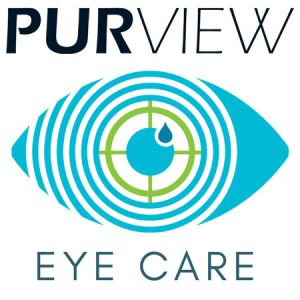Progressive lenses, sometimes called "no-line bifocals," eliminate the visible lines of traditional bifocals and trifocals hide the fact that you need reading glasses.
With progressive lenses, no one has to know whether you're wearing glasses just for fashion — or because your arms have "grown too short" for you to see up close.
Advantages of Progressive Lenses Over Bifocals and Trifocals
As our eye doctor can explain during your next eye exam, progressive multifocal lenses provide a more natural correction of presyopia than bifocal or trifocal prescription glasses - in addition to cosmetic advantages.
Instead of having just two or three lens powers like bifocals or trifocals, progressive lenses are true "multifocal" lenses that provide a seamless progression of many lens powers for all viewing distances.
With progressive lenses, you can look up to see clearly across the room and in the distance. You also can look ahead to view your computer in the intermediate zone and drop your gaze downward to read and do fine work comfortably through the near zone of the lenses.
And it's easy to adapt to today's modern progressive lenses.
A "corridor" of optimum lens power runs vertically down each progressive lens. Our eye doctor will take careful measurements of your eyes and eyeglass frame in order to place the corridor in just the right location so your eyes can naturally access the various powers within the lens for comfortable viewing at all distances.
And progressive lenses eliminate an annoying problem caused by bifocal and trifocal lenses known as "image jump."
With conventional bifocals and trifocals, images seem to "jump" as your eyes move past the sharply defined boundary between the distance and near parts of the lens. With progressive lenses, the transition between lens powers within the lens is smooth and seamless, letting you change focus from distance to near and back again more comfortably, with no image jump.
Choosing the Best Progressive Lenses for Your Needs
For all powers of progressive lenses to fit within a pair of eyeglasses, frames in the past had to be relatively large. If the frame was too small, the reading portion of the lens would sometimes end up uncomfortably small after the lens was cut to size and inserted in the frame.
But lens manufacturers have overcome this problem by introducing "short corridor" progressive lenses with compact designs that provide larger reading zones for today's smaller, fashionable frames.
The popularity of progressive lenses has exploded in recent years, making progressives the most widely purchased lenses for correcting presbyopia. Today there are many progressive lens designs to fit virtually any needs.
The differences in lens design are related mainly to the length and width of the progressive power corridor and how much of it is devoted to different viewing distances. Different areas of the corridor may be expanded, depending on the design philosophy of the manufacturer and the intended purpose of the lens.
Some progressive lenses are made specially for computer use, for example, and have a wider intermediate zone. Other progressive lens designs may have a larger reading portion. Your eye care practitioner is in the best position to evaluate which lens style will work best for you.
Progressive lenses also are available in a wide variety of materials, including regular plastic and glass,polycarbonate, high index, and photochromic lenses.
Adapting To Your Progressive Lenses
When you are fitted with your first pair of progressive lenses, you may need a short adaptation period to become fully comfortable using the lenses. This might take only a few minutes, or it could take a few days.

Progressive lenses are line-free multifocals that have a seamless progression of added magnifying power for intermediate and near vision.
This is because blending lens powers in progressive lenses lets you see clearly at all distances, but also causes minor abberations in the peripheral part of the lenses, to the left and right of the progressive power corridor (see diagram).
If you glance to the far right or left, especially when looking down, you might notice your vision is slightly blurred. Peripheral aberrations also might cause you to experience a sensation of "swim" when you make quick head movements.
Over the last several years, progressive lens designs have been continually improved to reduce peripheral aberrations. Today, most first-time wearers are comfortable with progressive lenses almost immediately.
If you experience any peripheral blur or "swim" when wearing progressive lenses, you usually can eliminate the problem by learning to make slight head movements to look more directly at objects. But most peripheral problems caused by progressive lenses typically are mild and temporary, and disappear as you adapt to the lenses.
Today's wide range of sophisticated Progressive Addition Lenses (PAL) won't reveal your age and will help restore your natural vision.
Today's Progressive Lens designs can be customized to fit your specific prescription taking into account all the specific parameters of your vision requirements.


In case of emergency, please phone our office at the number listed above. After hours, please visit your nearest emergency room.